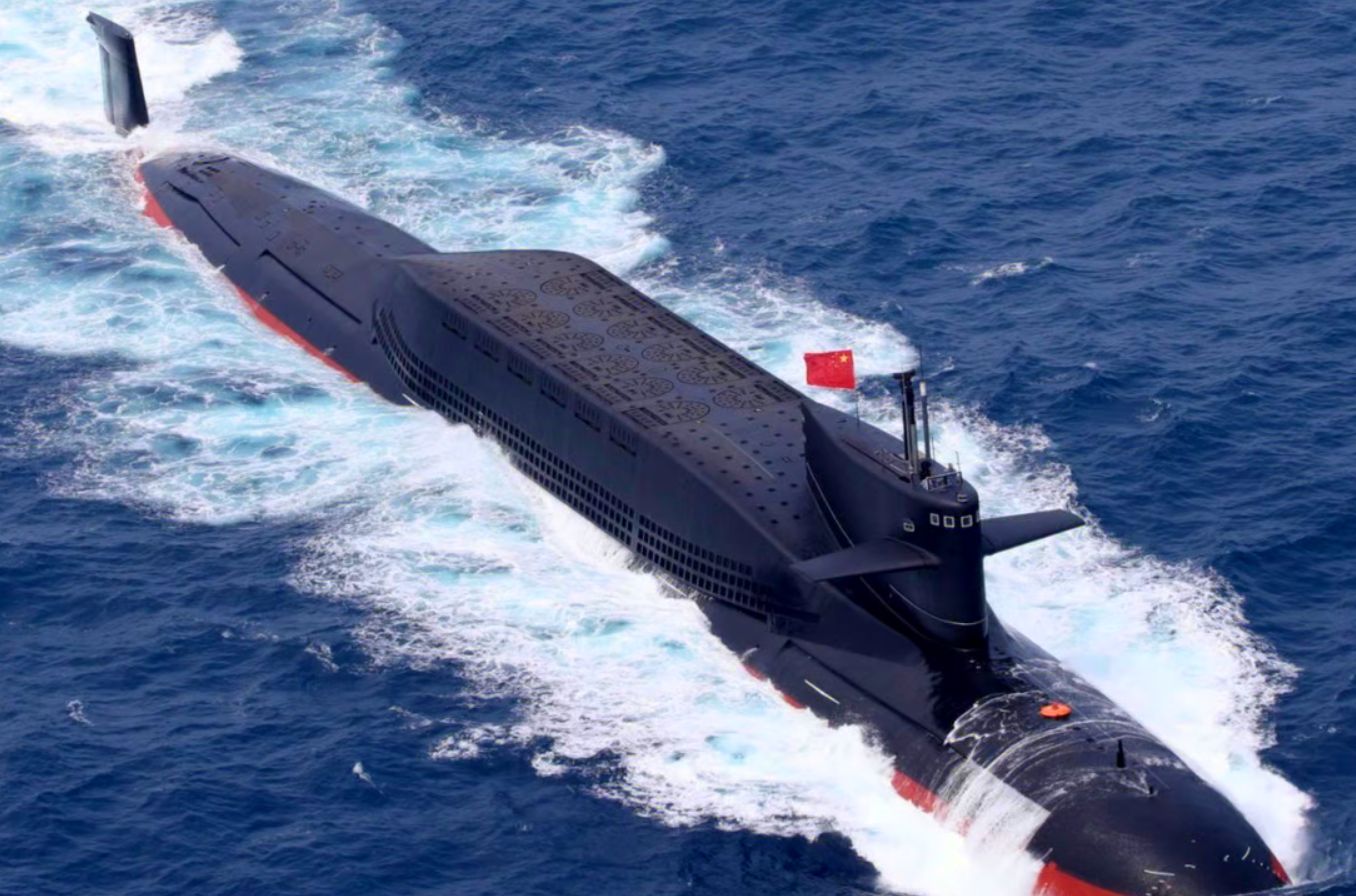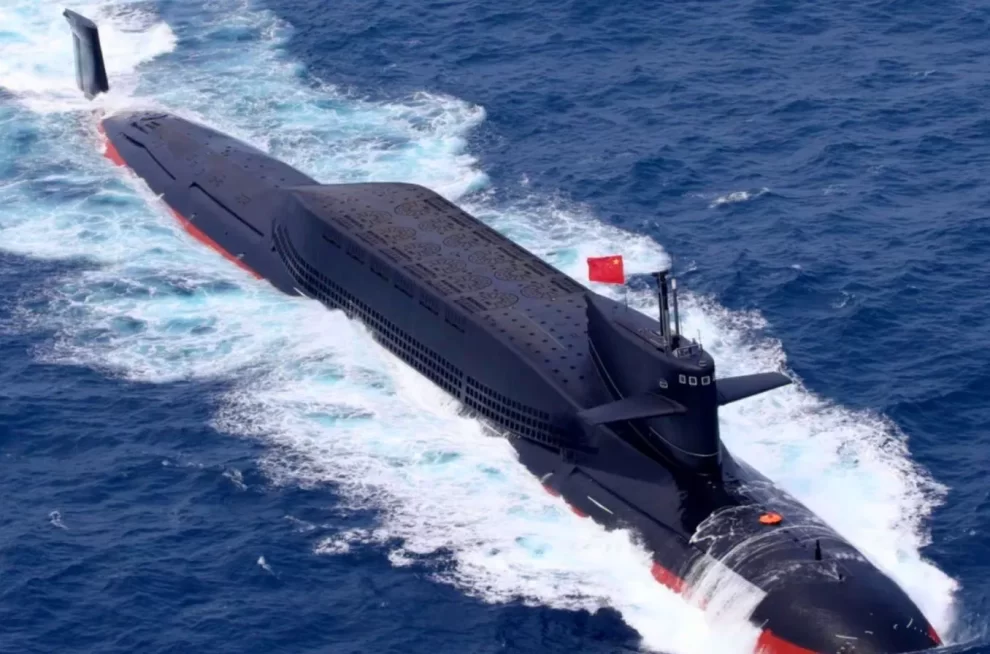The plot surrounding the alleged sinking of a Chinese nuclear submarine is thickening, with the latest United Kingdom publication contending that the platform went down after getting stuck in the trap laid out for the US submarines. The purported incident, denied vehemently by China, underscores nuclear submarines’ risks.
A report by UK intelligence quoted by the Daily Mail said the Chinese submarine hit a “chain and anchor” trap intended to snare Western vessels lurking off China’s Shandong province.
The Sun reported that the crew reportedly suffocated after a “catastrophic failure” of the 107m sub’s oxygen system. It is unclear whether the trap mangled the oxygen system or if the crew had suffocated before the sub sank and became stuck.
Earlier in 2021, a US nuclear attack submarine collided with an object in the South China Sea. Nuclear submarines, one of the deadliest weapon platforms in the world, are vulnerable in the event of an underwater accident causing a nuclear leak, regardless of whether they are nuclear-powered submarines (SSN) or nuclear-powered ballistic submarines (SSBN).
In the 200 years (from 1774-1985) of submarine operations, there have been over 1,750 accidents. While 1,448 submarines were lost due to enemy action, 302 were lost due to some mishap. A number of these accidents have involved nuclear submarines. The reasons behind the accidents involving nuclear-powered submarines vary, but nearly half were related to nuclear reactors.
Of the total of 41 accidents recorded in 36 nuclear submarines, 12 were related to nuclear reactors, resulting in the release of radioactivity within the vessel as well as in the sea, radiation poisoning, and the death of the crew in some cases.
Other accidents involved non-nuclear explosions, fires, flooding, and running aground. Over 650 crew members have died in these accidents. In many cases, the entire crew sank with the submarines.
“If the incident (sinking of Chinese SSN) has occurred, the global silence is perplexing. A nuclear submarine sinking should lead to global attention because a nuclear reactor leak due to damage can have serious consequences, including water contamination,” an Indian submarine expert told the EurAsian Times.
Structural failure with the submarine reactors could cause “a release of highly radioactive fission products” and lead to “a significant risk to life to those nearby and a public safety hazard to people in the big radius.”
“Besides the damage to the submarine and loss of life on board, the possibility of damage to the reactor is the most alarming. It could lead to the leak of radioactive material, which could contaminate the waters and the undersea environment,” an Indian Navy Commodore who wished to stay anonymous told the EurAsian Times.
“Also, if it carries nuclear weapons (as in SSBNs), that is an added hazard. Salvaging a sunken nuclear submarine can also be hazardous for the same reasons,” he added.
Wherever there is nuclear fission, there is a potential for harm to people and the environment. A core meltdown is the most severe accident in a nuclear submarine. A meltdown poses numerous dangers to people and the environment.
This includes exposure to direct gamma radiation from the vessel or a drifting cloud or plume of radioactivity and material deposited on the ground. Fission products can also escape to seawater, poisoning marine life and seawater.
There is both empirical and theoretical cause to be concerned about nuclear submarine accidents. Nuclear submarines are complex technical platforms operating under challenging conditions. Nuclear weapons-related systems, because of their structural characteristics, can pose unavoidable risks of accidents.
Nuclear-Powered Disasters
In one of the worst submarine disasters, K-19 was the nuclear submarine of the Soviet Union armed with ballistic missiles. It was hastily put in to keep up with the US military developments. On its first voyage on July 4, 1961, it suffered a complete loss of coolant to its reactor.
Several crew members worked in the radioactive steam to keep the reactor from melting. Twenty-two men who served on the submarine nicknamed “Hiroshima” and “The Widow Maker” died in the next two years. The disaster-inspired movie K-19: The Widowmaker (2002) starring Harrison Ford and Liam Neeson.
Two US nuclear submarines – USS Thresher and USS Scorpion are presently sitting at the bottom of the Atlantic Ocean, at depths of more than two kilometers, after sinking during the 1960s. USS Thresher (SSN-593) was the first nuclear submarine to sink. On April 10, 1963, it went down during deep-diving tests about 350 km (220 mi) east of Cape Cod, Massachusetts; its 129 crew and shipyard personnel aboard went down with it.
USS Thresher was designed to be the fastest and quietest submarine of its day to hunt the Soviet submarines.
USS Scorpion (SSN-589) was a Skipjack class nuclear-powered submarine of the US Navy that went down in May 1968 with all the crew onboard. The nuclear reactors of either of the submarines have not been recovered. The nuclear weapons on board the USS Scorpion have not been salvaged.
In 2019, a nuclear-powered mini-submarine of Russia sank in the Barents Sea in circumstances not fully revealed by Moscow.
In January 2018, a report in the Indian media revealed the country’s first nuclear-propelled submarine, INS Arihant, met with an accident while in port.
According to the International Atomic Energy Association (IAEA), many of these accidents have released radioactive materials into the biosphere, usually underwater but sometimes into the air.
The most significant number of nuclear-powered submarine accidents occurred with the Soviet/Russian submarines. In total, 14 nuclear reactor-related accidents on submarines and 13 occurred with Soviet/Russian vessels. Six suffered loss of coolant accidents, five had uncontrolled start-ups due to operator errors, and the reactor core was damaged in nine accidents.

Curious Case Of Chinese Nuclear Submarine
An undisclosed UK defense report confirms a devastating incident involving a Chinese submarine, the ‘093-417’, in the Yellow Sea. The report suggests that 55 Chinese sailors, including the captain and 21 officers, may have died due to a “catastrophic failure” in the vessel’s oxygen systems, the Daily Mail reported. There has been no confirmation from China yet.
The alleged accident led to system failures that took approximately six hours to resolve. During this window, the onboard oxygen system malfunctioned, poisoning the crew.
China’s official stance has been a blanket denial, even as they reportedly abstained from seeking international assistance.
Source : The Eurasian Times










